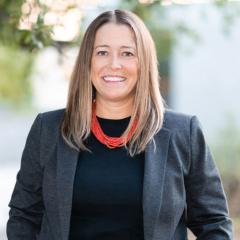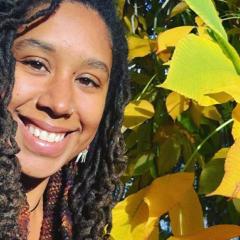Updates to equitable hiring practices
Editor's note: This story was co-authored by the hiring committee - Sarah Reed, Cora Preston, Laine Kuehn, Bruni Pizarro, Olivia Walton, and Erik Martinez.
In 2021, the Switzer Foundation reimagined our approach to hiring staff to align with best practices in equitable recruiting. As we launched recruitment for the new Program Manager position late last year, we made additional improvements to our hiring practices. The purpose of this post is to be transparent about the policies and practices we are adopting to advance equity and justice across the foundation and to share resources that enable members of the Switzer Network to make improvements to hiring practices at their own organizations.
We made the following improvements to our hiring practices in the recent Program Manager search:
- We invested extra effort in the outreach phase, to reach the widest possible range of qualified candidates. In addition to contacting peer fellowship programs and the extended professional networks of Switzer Fellows, we were especially active in pursuing candidates from racially diverse backgrounds. We spent considerable time and some money posting the opportunity on job boards and reaching out to programs beyond the typical environmental or philanthropy sources, including some job boards managed by Switzer Fellows’ organizations, such as Black Oak Collective and Black in Environment. These efforts helped to increase representation of BIPOC candidates to 48% of the applicant pool, compared to 27% of the applicant pool for our last search.
- We implemented a better system for tracking applicants’ demographic information. We collected optional demographic information through the application portal (in a similar manner as we do for fellowship applications), and we stored the information separately from applications under review. We only viewed the data in aggregate to track representation and ensure we met our commitment to maintain a candidate slate that was diverse by gender, race, and geography through all stages of the search process.
- We included the actual pay range in the position announcement, and we did not request a salary history from applicants. This is important to help close gender and racial pay gaps in our field, as well as the pay gap between foundations and nonprofits.
- We declined to meet with candidates or answer questions individually prior to the finalist stage of interviews. The reasons were both due to staff capacity (as we received nearly 350 applications to the position) and to avoid creating advantages for applicants who knew or had a connection to a member of the search committee. Instead, we posted answers to frequently-asked questions on the position announcement, where all applicants could see the information.
- We communicated openly with applicants to share our progress in the search process, notify finalists that we were contacting their references, and notify applicants who were not selected for the position. Sending these messages did not take much time, but we heard feedback from applicants that it was unusual and appreciated.
We also continued the following recruitment and hiring practices from our prior search process:
- We convened a search committee that was diverse by gender, age, geography, sector, race, and role in the foundation. This was important not only to ensure representation of varied backgrounds and perspectives in the decision making process, but also to reflect the fact that the Program Manager will be collaborating with members of the Switzer Network as much as with foundation staff. The search committee reached agreement about all candidates that were invited for interviews and determined to be qualified for the position.
- We applied rubrics for evaluation of candidates at the application and interview stages. The purpose of a rubric is to structure and standardize the review process as much as possible among committee members and candidates, in order to reduce subjectivity and minimize bias. Evaluation criteria focus on the candidates’ knowledge, skills, and abilities in relation to the job requirements and are drawn directly from the position description.
- We structured the interview process as much as possible to reduce possible bias. We conducted panel interviews with the full search committee. We used a standardized list of questions for all interviews, and we minimized follow-up questions and prompting. We evaluated candidates’ responses using a rubric (described above), and we did not discuss candidates until all interviews were complete. We also provided the committee with supplemental resources for recognizing and minimizing bias (included below).
- We incorporated warmth and relatability by modeling the foundation’s values and practices in how we held the conversations. Specifically, we opened each interview similarly to how we open Switzer Network events, with introductions including personal details, a set of working agreements emphasizing the candidate’s comfort, and a clear description of what to expect during the conversation. Our goal was to offset a potentially impersonal or intimidating environment created by practices such as standardized questions and panel interviews, especially for early-career candidates or candidates from backgrounds underrepresented in the environmental field.
Below we have listed the sources the foundation consulted as we developed our updated hiring practices. We know that many of you are experts in equitable recruiting or are actively engaged in modifying your organizations’ recruitment practices. We welcome your feedback on our process and encourage continued discussion about best practices to promote equity in environmental job searches.
Resources:
Beasley. 2016. Diversity Derailed: Limited Demand, Effort and Results in Environmental C-Suite Searches. https://diversegreen.org/research/diversity-derailed/
Bohnet. 2016. How to Take the Bias Out of Interviews. https://hbr.org/2016/04/how-to-take-the-bias-out-of-interviews?utm_campaign=harvardbiz&utm_source=twitter&utm_medium=social
Chicago Beyond. 2023. Mirror Tool (tool for addressing unconscious bias in decision making). https://chicagobeyond.org/mirrortool/
Le. 2015. When You Don’t Disclose Salary Range on a Job Posting a Unicorn Loses its Wings. https://nonprofitaf.com/2015/06/when-you-dont-disclose-salary-range-on-a-job-posting-a-unicorn-loses-its-wings/
Le. 2020. Not showing the salary range in job postings is archaic and inequitable. So why do we keep doing it? https://generocity.org/philly/2020/09/14/nonprofit-af-not-showing-the-salary-range-in-job-postings-is-archaic-and-inequitable-so-why-do-we-keep-doing-it/
McGhee, Mayo and Park. 2018. Demos’ Racial Equity Transformation: Key Components, Processes & Lessons. https://www.demos.org/research/demos-racial-equity-transformation-key-components-process-lessons
Taylor. 2014. The State of Diversity in Environmental Organizations. https://diversegreen.org/research/the-challenge/
University of Washington. 2021. Candidate Review and Selection (including sample rubric). https://www.washington.edu/diversity/staffdiv/hiring-toolkit/candidate-review-selection/




